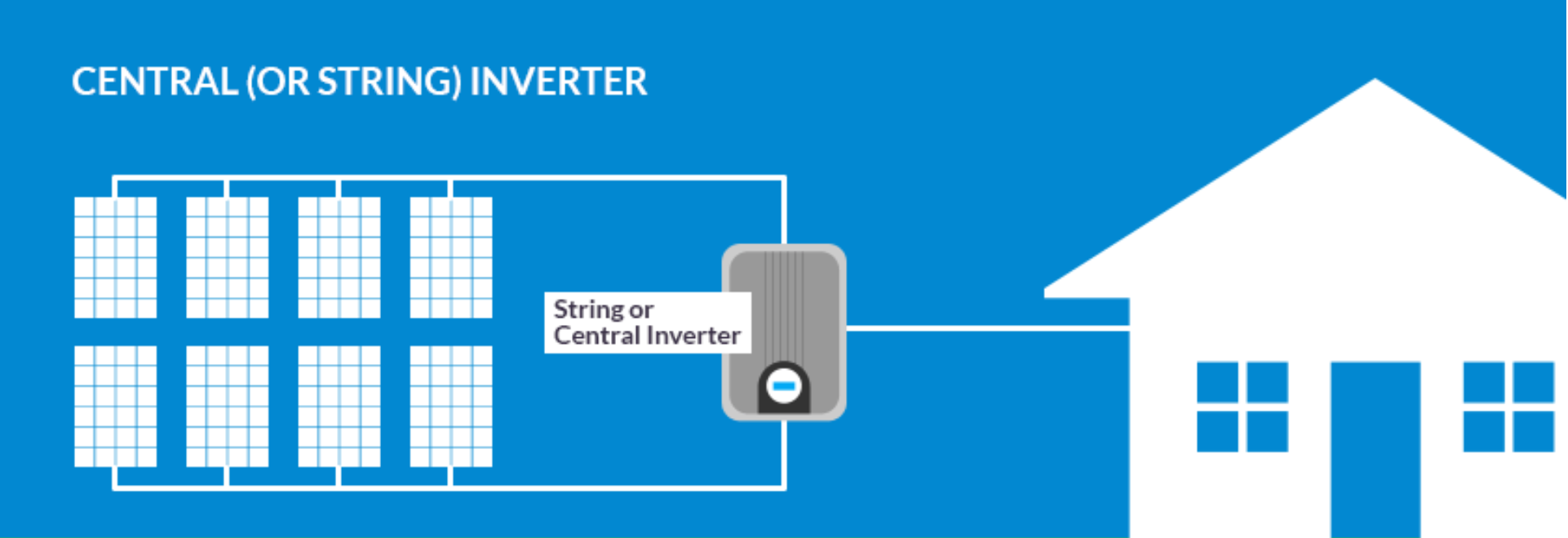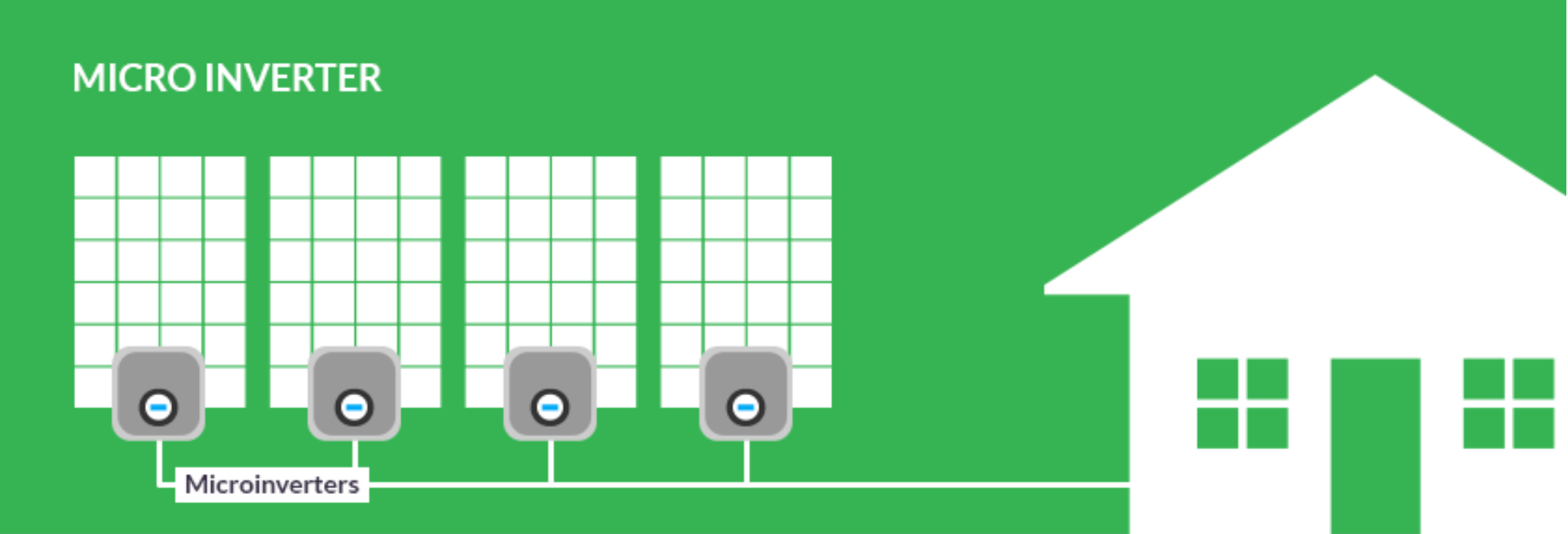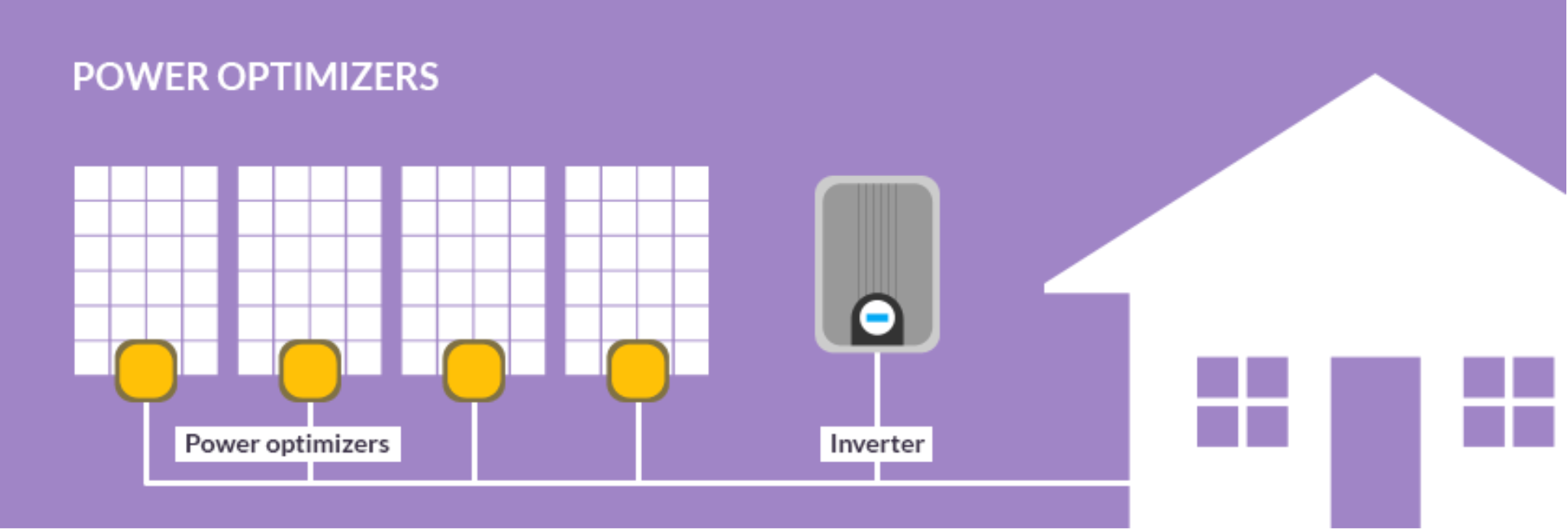In Edmonton installing a solar power system for homes has never been more popular; we get tons of sun year-round and, of course, long days through the spring and summer months. If you are thinking about investing in solar for your home, we thought we would introduce you to one of the most significant parts of a solar PV system - the inverter. The inverter’s primary function is to convert the DC voltage produced by the PV modules to AC voltage which can then be used in the home or exported to the grid.
The Central (or String) Inverter

Conventionally, we used string inverters, with the modules wired in series in ‘strings’. There were many calculations that needed to be done to ensure the string voltage and current were at acceptable levels for the string inverter to accept. The major downside of this design was that it is prone to major losses due to shading. If the string doesn’t reach the minimum voltage to turn the inverter on, it won’t convert any of the energy captured by the modules. The primary use of string inverters is in commercial applications where shading is less of a concern than in residential applications. Think of a PV array on a big box store or school.
The Microinverter

Microinverters replace the central string inverter with a small ‘micro’ inverter underneath the PV modules. You might have one per module, or every 2 or even every 4 modules. The major perk of the microinverter system is scalability. Theoretically, a microinverter system could scale infinitely – simply by adding more modules, more microinverters, and more strings. The downside of this style of system is the efficiency of the inverter. Microinverters are typically less efficient than optimizer/inverter systems. Enphase microinverters are about 97% efficient in converting DC energy into AC power.
Power Optimizers

PV Optimizers and a central inverter meld the best of both worlds between a string inverter and microinverters. Just like microinverters, there is a device mounted under each pv module – that device just happens to be an optimizer. The optimizer takes the voltage from the module and optimizes it to the ideal setpoint that the inverter is looking for. That means the central inverter will turn on with very minimal sunlight, or very few modules getting sun – which means shading is no longer a major issue. Optimizers and a central inverter are also extremely efficient – SolarEdge boasts a combined efficiency of 99.25%.
In the end – the decision to choose between microinverters and optimizers for your residential solar PV installation will depend on the site-specific scenarios for your home. If you want the most efficient product with the best warranty, SolarEdge definitely has the leg up. They also have a full range of products that work seamlessly together, so if you’re interested in integrating power monitoring or EV charging with your solar installation, SolarEdge is the way to go. If you have plans on expanding the solar array in the near future, the scalability of microinverters can’t be matched. The choice will really be answered after an in-depth analysis of your site and energy needs.
Working with a knowledgeable and experienced company like BLDG will help you see which option can maximize your home’s potential. Check out our residential solar services for single-family homes, commercial solar services for larger residential buildings, or contact us today to discuss your options.
